Catching carp on the gum, carp, perch, bream and pike
Bottom fishing has always been considered the lot of experienced fishermen. It requires not only the habits of the inhabitants of the depth of knowledge, but also thorough training gear. Today, there are dozens of types of devices for bottom fishing, but fishing on the "gum" is one of the most hazardous and exciting ways.
Donka with rubber shock absorber
This gear was invented by our compatriots in the 80-ies of the last century and has been successfully used by anglers today. Its difference from the ordinary Donkey is the presence of a rubber shock absorber made of thin rubber fishing.
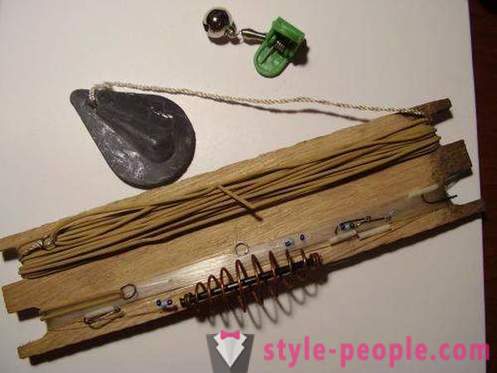
Also, it greatly simplifies the process of fishing due to the fact that the line does not need to throw after each bite. Suffice it to tighten it, to unhook the catch correct bait and release the water smoothly.
The design of "gum" is composed of the following elements:
- small reel on which is wound around the entire gear;
- main line section 0, 4.25 mm and a length of about 30 m;
- 5-7 leashes of the section of line 0, 15-0, 25 mm length of 15-25 cm;
- hooks (size adjusted for the size of the bait and the expected catch);
- length of fishing or model airplane rubber length of 15-25 m;
- load weighing 300 g-1, 5 kg;
- signaling bite (electronic device or a conventional bell).
Installation of gear
To begin to prepare leashes with hooks. It is better if they are to the main line will be secured through karabinchiki - it will facilitate installation and eliminate the entanglement of gear during transport.
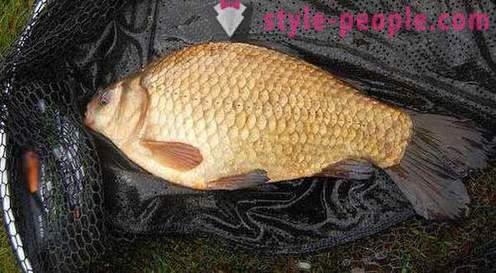
You can, of course, this ignored and, having put on the sting of the hook pieces of cambric or rubber nipple.
On the main line made hinges for mounting leads of at least 30 cm apart. All you need to make 5-7 such outlets. Shock is bound to the main line through the swivel. This will prevent the gear from twisting. The load is also attached to the rubber via carabiner.
Difficulties in installing the gear
Fishing on the "gum" has only one drawback - the difficulty in calculating the gear. It is important to precisely match the length of the rubber and the weight of the load. If the shock is too short, it can end with pulling gear. When the rubber is too long, there is a possibility that it will not cause the main line with a lead in the right place. Too heavy load can also cause breakage of rubber and will not be easy to keep gear.
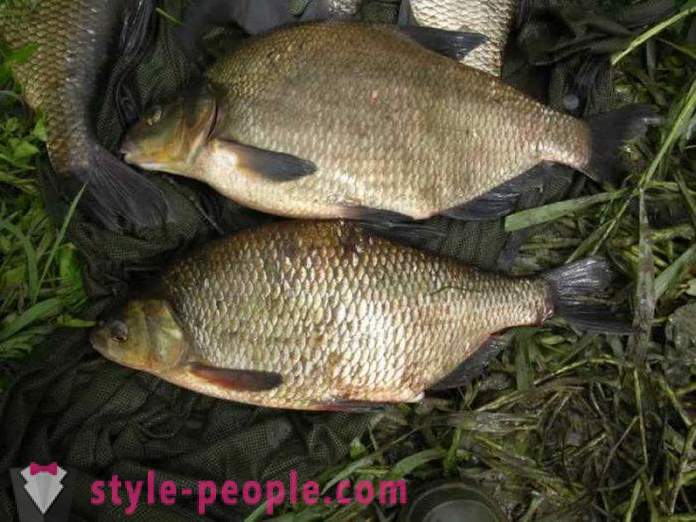
In order to accurately calculate the length of the gear, you must at least roughly determine the range of its casting. Further, given the size of the main fishing line necessary to determine the required yardage suspension. It should be borne in mind that 1 m of rubber at rest is equal to 3 m when it is stretched.
Load weight as calculated based on the distance casting. To fine-tune it, you must first expand the entire gear on the beach and try to pull it out until the last leash. Cargo thus should remain in place.
Experienced anglers invented extra entry for "gum" excludes the open damper. This separate monofilament thickness of 0, 4-0, 5 mm, which is tied directly to the load. In case of difficulty with pulling "gum" or unforeseen hook, simply pull the rope with the help of this scaffold.
How to deliver the tackle to the right place
Angling to "gum" fishing involves a considerable (from 30 to 70 m) away from the shore. Given the specificity of construction "gum", throw it by hand at the beginner is unlikely to succeed, although some fishermen manage to do it with the help of various devices. Here is an example of one of them.
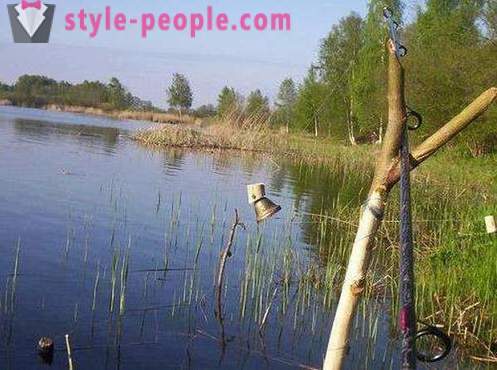
Take an ordinary tin of beer or coffee. It is wound previously unwound tackle so that the tires with load has top and bottom monofilament. End with a load for casting is taken in the hand, which is better, and more to get him to throw. Banks should be in another outstretched hand. On a roll load with rubber flies forward, unwinding the line at the bank on the basis of a fast-response spool.
In an extreme case it is possible to swim and to establish a "gum" in the right place. But it is best to deliver the tackle using a boat - it's convenient and safe for the fisherman. Especially that this method eliminates spontaneous entanglement Donkey.
The end of the fishing line is attached to the shore at previously installed peg height of about 60-80 cm. At a distance of about 30 cm from the fixing place tackle hangs a bell or electronic switch fish.
What kind of fish can be caught on the "gum"
This type of fishing is catching on, "gum", makes it possible to catch any fish from roach and perch and bass finishing. The only thing for the predator as bait live bait needed, as well as more robust tackle. But more often donk with rubber bumper catch peaceful fish such as carp, crucian carp, bream and sabrefish.
How to catch carp
Catch carp all year round, except winter. It is best to use for this purpose the bottom gear. The stagnant water carp need to look away from the shore, so carp fishing on the "gum" - quite a common thing in the large ponds and reservoirs. Of course, the catch copy of the trophy this gear is unlikely to succeed. Close carp easily tear off a tackle, but for catching small fish (up to 1, 5 kg) of "gum" - the perfect accessory. As the bait is best suited:
- carp baits;
- boiled peas;
- canned corn;
- a worm;
- a bunch of maggots or bloodworm.
For catching on throughout the need to use a heavier load - up to 1, 5 kg. This will allow the gear does not move under the influence of water flow.
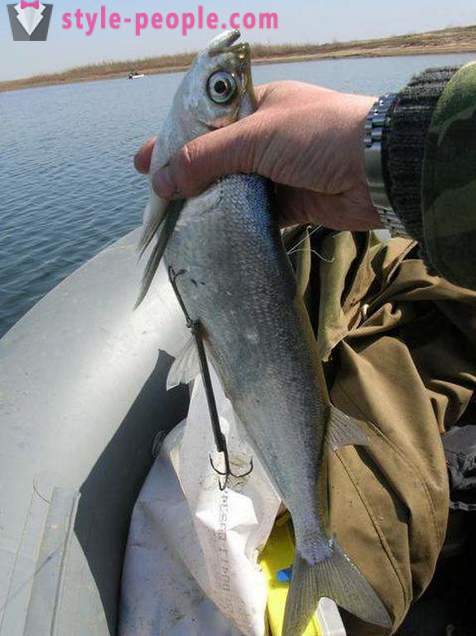
Any fishing for carp provides for compulsory complementary feeding space, so some anglers recommend the post on the main line conventional feeder bird feeder filled with boilies groundbait or a special mixture.
Bite at this fish very carefully, which is why it is absolutely necessary hooking at the first signal. Otherwise, carp, suspecting a trick, simply spit out the bait.
Catching carp on the "gum"
Karas, as fish is very common in our latitudes, is caught from the middle of spring to late autumn. It can be found in almost any body of water, where enough food for him. Catch a carp can all tackle, including the "rubber band". Suffice it to choose the right bait. The best baits for carp are:
- muckworm;
- maggot;
- peas;
- corn;
- dough;
- decoy
Due to the fact that this fish has a habit of changing their culinary preferences, better bring your fishing several types of bait. You can even place a different bait on the same gear. Bite carp for sure, which is why it often happens samopodsekanie, but once again pull the rope does not hurt.
How to catch sabrefish to "gum"
Late spring in rivers and reservoirs begins boom real fishing. During this period spawned sabrefish begins Jordania. Hungry fish actively biting on animal bait (maggots, worms and bloodworms), as well as pea mastyrku. It happens that it takes even a bare hook, tied with red thread. Fishing on the "gum" sabrefish at this time - it is a pleasure.
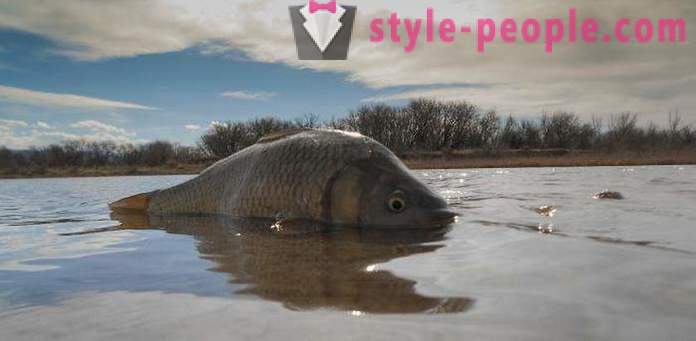
pecks sabrefish very sharply and very rarely goes to the tackle, so the landing of the catch easily for the angler is not. Fishing line does not even need to fix anywhere - biting so often that it is better to hold.
bream on the "gum"
Catch up on "gum" bream is not easy, but possible. He prefers to stay at depth in snags, as well as at the intersection of currents. This, of course, complicates the fishing because of the danger hook tackle, but if the "gum" and bring the boat to properly install, you can get a good catch. Bream feeding portion catching required. It can be used as special mixtures or dusty baits. To bait the bream fit:
- Worm;
- crank;
- corn;
- decoy
Bream, like carp, very careful when biting. Only a timely sweeps help to catch him. Sometimes fishermen use special devices that allow to produce podsekanie. Their principle is based on the properties of the springs expand and contract. The end of the fishing line is tied to "arm" the device, aimed at extension spring toward the reservoir. At the slightest movement gear mechanism is triggered, whereby the scaffold is a sharp jerk back. When playing bream almost no resistance, so pull it even in the bottom zakoryazhennogo will not be any problems.
Catch on the "gum" predatory fish
Donka with rubber shock absorber and is perfect for hunting predator. The main thing in this process - find the right place. Predatory fish are not "wandering" around the pond in search of food, she prefers to hunt on their proven paths. On large ponds zander and big perch worth looking at a maximum distance from the shoreline in depth changes, backflow and island ducts. On the rivers with a narrow bed of a predator can be calculated by the behavior of young fish. Very often, especially in the morning, he rides a trifle near steep banks, in places, overgrown with reeds and water lilies.
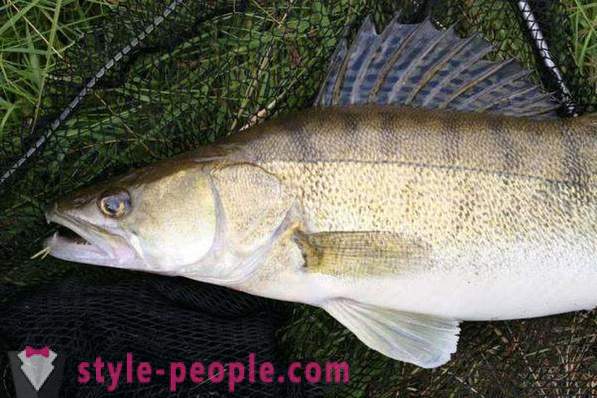
For fishing on the predator will need live bait - fry fish living in the same body of water, where it is planned fishing predator. Best suited bleak, verkhovka, juvenile roach, carp and even bass. Zywiec is placed on the hook for one or two lips, nostrils or behind the back under the upper fin. It is important that the bait as possible remained alive longer. Zander on the "gum" on the dead bait fish is doomed to failure - it does not feed on carrion. Not for nothing that he was nicknamed the river tiger. He harshly attacks the bait, just swallowing it. However, when playing its aggression instantly disappears at the first breath of air.
Perch "humpback" very similar in their habits with perch, they can even hunt side by side. For its use similar luring bait.
If on the "rubber band" will fall pike, problems will arise. It is easy to lead a snack, and even confuse tackle. But small specimens can sometimes get.













































